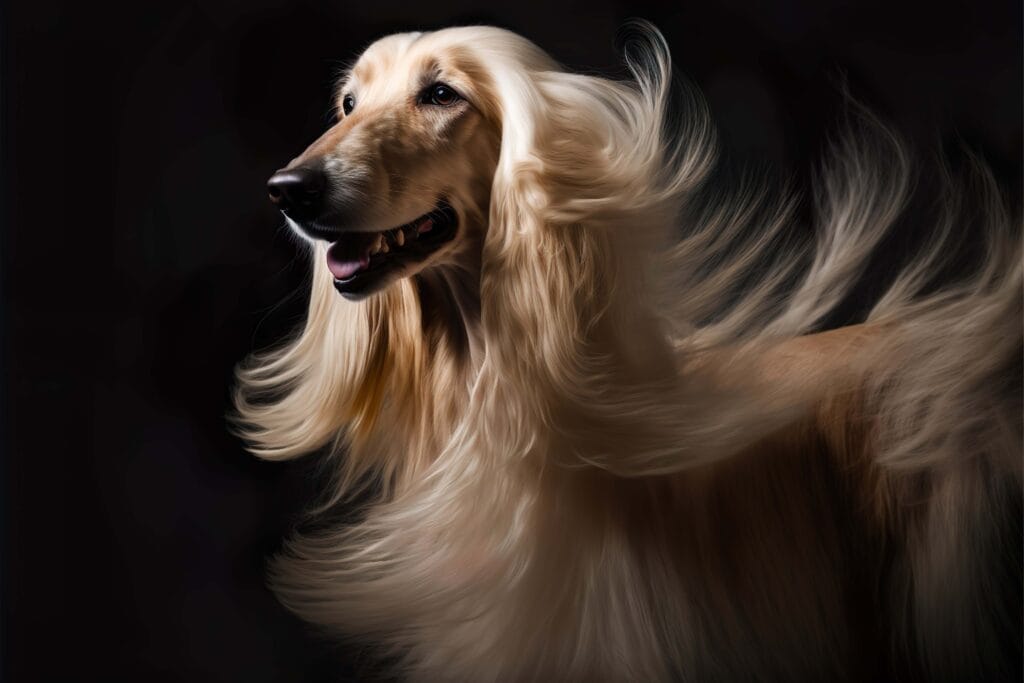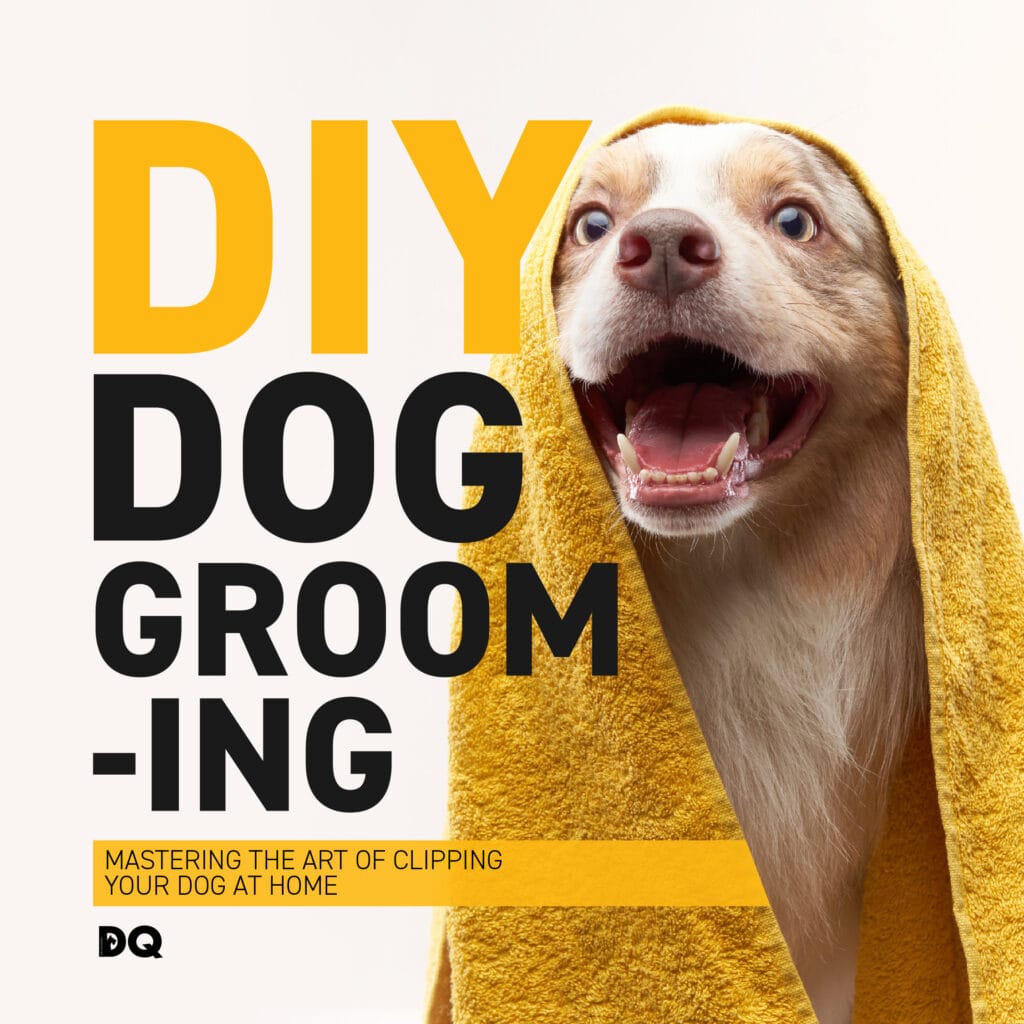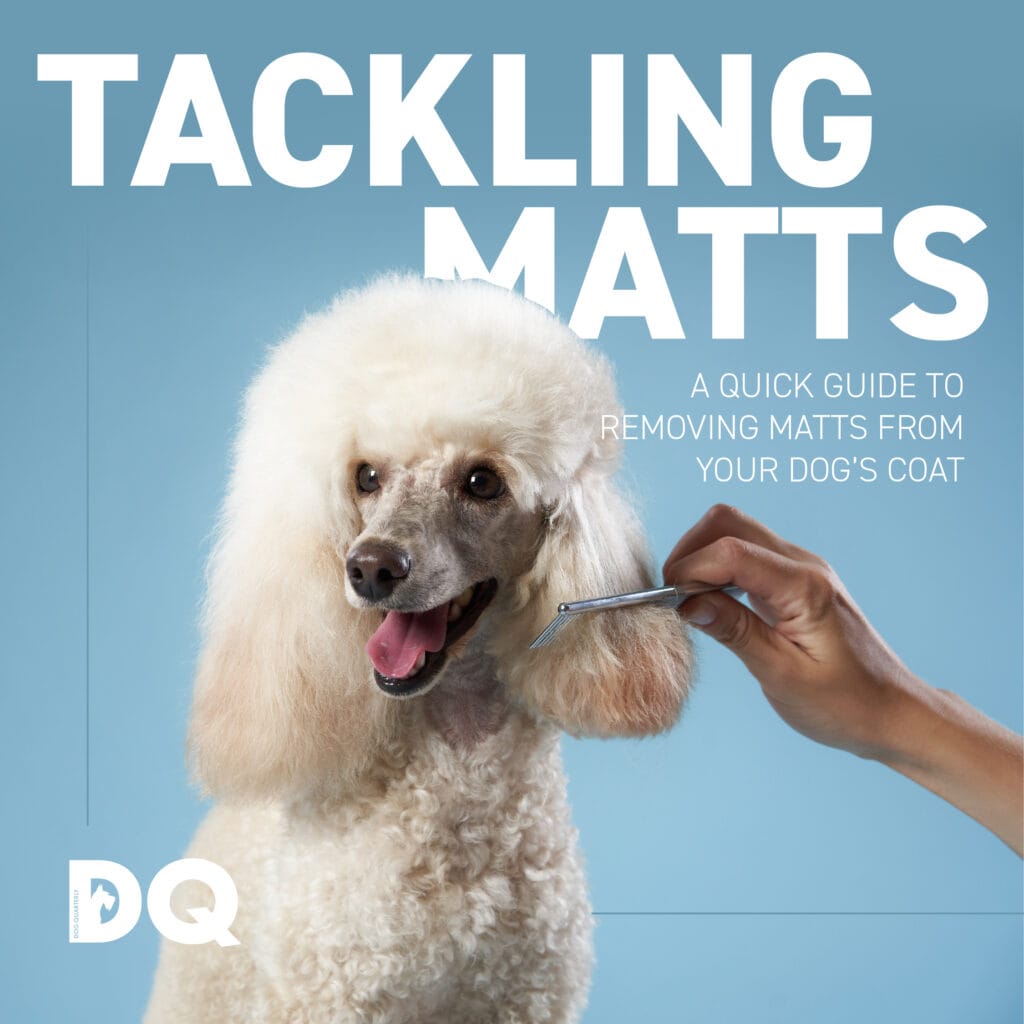Knowing how to brush a dog is an essential part of keeping your dog healthy and happy. As well as helping their coat to look great, brushing removes dead hair, prevents excess shedding, reduces matting and distributes the natural oils found in the skin for optimal health.
How often should you brush your dog’s hair?
Brushing helps to keep your dog’s coat and skin as healthy as possible. It also provides valuable time to bond with your canine companion while checking for things like grass seeds in the coat. In colder weather, dogs tend to shed less, so in winter, you might get away with less frequent brushing than in the hotter summer months, but in general terms, you should base the frequency of your dog’s brushing schedule on his individual requirements.
Dogs should be matt free at all times, and this does require regular brushing. If we only brush our dogs when severely matted, we will break the hair, which will then matt more rapidly, causing a vicious cycle. So, as a rough guide, a few times a week is a good starting point for most breeds with medium-length hair.
Preparation is key
Before you begin brushing your dog, you should set up an environment to keep your dog relaxed and calm while you brush them. You should also consider the surface on which you will brush your dog, making sure it is at a comfortable height and is not too slippery. Using a rubber car mat to stop dogs from slipping around during grooming is a very good idea! Having a wall can also aid in keeping your dog in place during his brushing session. Never leave your dog unattended when on your grooming surface.
The different equipment you might need for brushing your dog includes the following:
- A flexible slicker brush
- A body brush
- A banded comb, where a rubber band is wrapped through the teeth of a medium-spaced comb
- A shine and polish spray for dogs
- Thinning scissors
Remember to make sure all equipment is dog-safe; for example, make sure the teeth on the comb have rounded edges and are not sharp.
How to brush a dog
When brushing, you can use a bit of pressure over areas when your dog has a layer of fat, and then reduce the pressure over bony areas, going over them more gently, for example, the elbows. You ideally also want to brush a dry dog, so don’t try and brush them immediately after a bath. Aside from these general tips, it is important to consider the specific requirements of your dog’s coat type. Read below to find out more:
The long-haired dog
For long-haired dogs, begin at the feet, using a flexible slicker brush to get through any tangles and then using a wide-toothed comb to go over it and check it is not knotted or matted before moving onto the next few centimetres of hair.
Continue up the leg, then across the body and the head. For any tangled areas of hair that cannot be brushed out, try using thinning scissors to cut into the matted areas. You then comb through these areas and should find the matt has gone, without leaving a noticeable chunk of fur missing.
The short-haired dog
For a dog with a short coat, begin by combing over the areas they are likely to shed (i.e. the sides of the body) using a banded comb. After this step, you can take a soft body brush and spray shine and polish spray onto it before brushing it all over the body, all the way down to the feet. This removes any loose hairs and dandruff. Do the same for the head but with a smaller and softer brush.
The wire-haired dog
You can hand strip (pull out the unattached longer hairs using your fingers) or clip wiry dogs. When brushing them, use a banded comb and be aware that a damp coat will make it easier to remove a lot more fur. Remember, only dead hairs will come out. You can then give them a little shine spray and comb through again before finishing brushing with a polishing brush.
The double-coated dog
When brushing a double coat, it is best to start by brushing the undercoat using the flexible slicker brush. Longer double coats may require an undercoat rake to ensure the brush reaches the dog’s skin and can get through any tangles. Once you have done this, you can proceed as for a long-coated dog.
The fleecy coat
For poodles, and other similar breeds, you want to begin again at the feet, using a flexible slicker brush to get through any tangles and then using a wide-toothed comb to go over it and check it is not knotted or matted. Each time you complete a section, add a little more hair to the brushing section and keep going. Continue up the leg in this way, then across the body and the head, being aware of the sensitive structures of the face. For any tangled areas of hair that cannot be brushed out, try using thinning scissors to cut the matted area at three levels (close to the skin, a little way from the skin and furthest from the skin). Then comb through the section that has been cut with the thinning scissors. This should remove the matt or knot without leaving a noticeable chunk of fur missing.
Please note
The comb is not for pulling on knots. The comb is for finding the knots so that they can be brushed out with the slicker brush.



